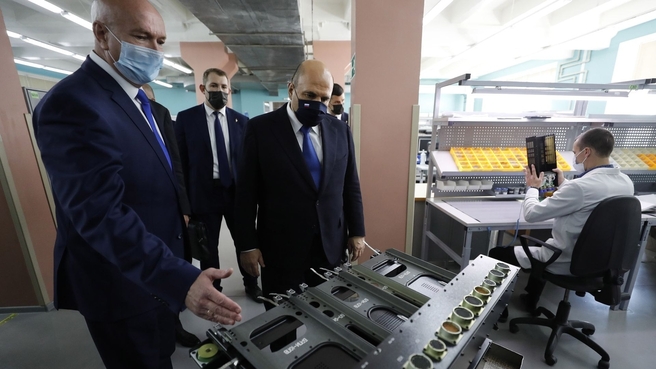Chemical Analyzer Operating Principles and Safety Features
페이지 정보
작성자 Freddie 작성일 25-03-19 17:52 조회 32 댓글 0본문
A measuring device is an vital equipment in multiple industries, including but not limited to, chemical, production, medical, and environmental fields. These appliances are utilized for examining the composition of gases to ensure their quality and compliance compliance.
Operating Characteristics of Gas Analyzers:
 Gas analyzers commonly employ a sensor-based measurement system that examines the characteristics of gases, such as density, tension, or flow rate.
Gas analyzers commonly employ a sensor-based measurement system that examines the characteristics of gases, such as density, tension, or flow rate.
The primary primary operating characteristics behind gas analyzers are:
1. Optical Analysis: This method includes measuring the reaction between illumination and the gas molecules, allowing for the detection and quantification of the gas composition.
2. Electrochemical Detection: This method uses an electrochemical cell that measures the electrical current or resistance produced by the interaction between the gas and an electrode. This technique is commonly used for переносной газоанализатор detecting gases such as h2o2, hydrogen, and co.
3. Permeable Detection: This method involves using semipermeable membranes to divide the gas molecules, allowing for the detection of the density and composition of the gas.
Safety Features of Gas Analyzers:
Gas analyzers employ a broad range of safety features to ensure the precise and trustworthy detection of gas composition while protecting the users and the ecosystem from hazardous hazards. Some of the key safety features of gas analyzers include:
1. Integrated Calibrators: Many modern gas analyzers come with integrated calibrators that allow users to verify the precision of their measurements and perform routine maintenance and preventive maintenance tasks.
2. High-Temperature Safety Measure: Gas analyzers are designed to tolerate extreme temperatures, but they also include safety features that prevent the device from malfunctioning or escalating when exposed to high temperatures.
3. Safety Sampling Systems: To preclude exposure to toxic gases, gas analyzers often come equipped with safety collection systems, such as distant sampling systems that allow users to collect gas samples from a safe distance.
4. Semiautomatic Shut-Off: Some gas analyzers feature an automated shut-off system that automatically disables the device in case of an alarm or error condition to preclude any potential hazards.
5. Signal Light: Gas analyzers often come equipped with customizable alarms and notifications that notify users to potential gas leaks, fires, or other harmful conditions.
Operating Characteristics of Gas Analyzers:
 Gas analyzers commonly employ a sensor-based measurement system that examines the characteristics of gases, such as density, tension, or flow rate.
Gas analyzers commonly employ a sensor-based measurement system that examines the characteristics of gases, such as density, tension, or flow rate.The primary primary operating characteristics behind gas analyzers are:
1. Optical Analysis: This method includes measuring the reaction between illumination and the gas molecules, allowing for the detection and quantification of the gas composition.
2. Electrochemical Detection: This method uses an electrochemical cell that measures the electrical current or resistance produced by the interaction between the gas and an electrode. This technique is commonly used for переносной газоанализатор detecting gases such as h2o2, hydrogen, and co.
3. Permeable Detection: This method involves using semipermeable membranes to divide the gas molecules, allowing for the detection of the density and composition of the gas.
Safety Features of Gas Analyzers:
Gas analyzers employ a broad range of safety features to ensure the precise and trustworthy detection of gas composition while protecting the users and the ecosystem from hazardous hazards. Some of the key safety features of gas analyzers include:
1. Integrated Calibrators: Many modern gas analyzers come with integrated calibrators that allow users to verify the precision of their measurements and perform routine maintenance and preventive maintenance tasks.
2. High-Temperature Safety Measure: Gas analyzers are designed to tolerate extreme temperatures, but they also include safety features that prevent the device from malfunctioning or escalating when exposed to high temperatures.
3. Safety Sampling Systems: To preclude exposure to toxic gases, gas analyzers often come equipped with safety collection systems, such as distant sampling systems that allow users to collect gas samples from a safe distance.
4. Semiautomatic Shut-Off: Some gas analyzers feature an automated shut-off system that automatically disables the device in case of an alarm or error condition to preclude any potential hazards.
5. Signal Light: Gas analyzers often come equipped with customizable alarms and notifications that notify users to potential gas leaks, fires, or other harmful conditions.
- 이전글 Турниры в казино {}: простой шанс увеличения суммы выигрышей
- 다음글 General Contractor Santa Clarita
댓글목록 0
등록된 댓글이 없습니다.
